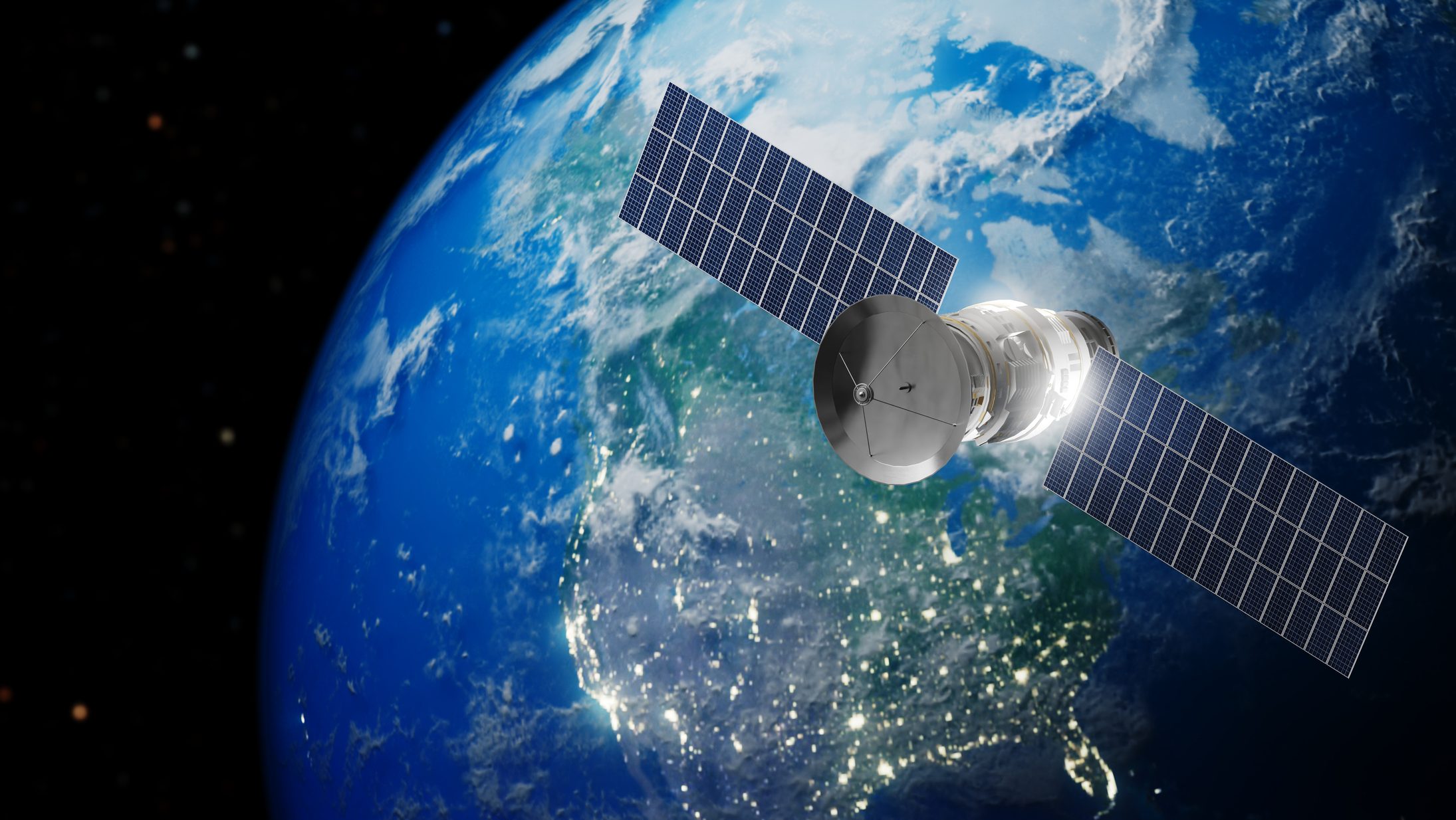 Credit: Just_Super
Credit: Just_Super
Over the past two decades, the satellite broadband landscape has transformed dramatically. As demand for high-speed connectivity grows exponentially and satellite technology advances, spectrum regulatory frameworks need updates or risk becoming obstacles to progress and demand. On June 23, 2025, the Federal Communications Commission (FCC) published a Notice of Proposed Rulemaking (NPRM) to update the current regulatory framework governing Geostationary (GSO) and Non-Geostationary (NGSO) satellite networks, specifically in modernizing Equivalent Power-Flux Density (EPFD) limits established over 20 years ago in an environment not comparable to the one today.
The Issue with EPFD
Current EPFD limits were designed by the International Telecommunication Union (ITU) before the new millennium. To understand why this matters, we need to understand GSO and NGSO satellites. GSO satellites revolve in the same direction as the Earth, appearing stationary when viewed from the ground. GSO satellites provide coverage for large swaths of the Earth’s surface. The first geostationary satellite transmitted live coverage of the 1964 Summer Olympics from Japan to America. NGSO satellites, on the other hand, move relative to the Earth’s surface and are closer to it than GSO satellites. NGSOs have improved coverage, lower latency, increased bandwidth, greater location flexibility, and cost less to produce compared to GSOs. As satellite technology evolves — providing cheaper, wider, and more reliable connectivity — EPFD limits restricting NGSOs in favor of GSOs demonstrates the need to update these regulations.
When the EPFD was established, the market was dominated by GSO satellites with virtually no NGSOs. EPFD limits protected GSO satellites from any interference caused by NGSO satellites. These limits from the ITU primarily focused on short-term interference protections and never completely accounted for long-term impacts or the rapid expansion of NGSO satellites. Today’s market is entirely different from that of 25 years ago: NGSO and Low Earth Orbit (LEO) satellites comprise the vast majority of the 12,000 operational satellites in orbit. These systems are crucial to providing broadband access globally, especially in rural or underserved communities and those that might be subject to natural disasters.
Modern satellite systems, such as NGSOs, are designed with advanced features that minimize interference and optimize spectrum use, enabling them to collaborate effectively and deliver seamless, widespread coverage. Yet NGSOs are currently constrained by long outdated rules that limit their ability to maximize performance and capacity. These constraints result in reduced broadband coverage, higher operating costs, and are a barrier to connecting millions of Americans and people across the world.
Economic Benefits and Emergency Use Cases
Modernizing EPFD limits has significant economic benefits. The U.S. is currently the global leader in satellite deployment, and NGSOs are central to that success. Over the first four months of 2025 alone, there have been over 1,200 NGSO launches, an increase of 50% compared to the same period last year.
One reason for the growth in the NGSO industry is Low Earth Orbit (LEO) broadband connectivity. NGSO satellite constellations from Project Kuiper, Starlink, OneWeb, and others are seeking to connect people through LEO broadband and they account for three-fourths of active satellites. An estimated 70,000 LEO satellites are expected to be launched over the next five years, simultaneously demonstrating how rapidly the satellite broadband market is evolving and signaling how the broadband regulatory framework will need to change to keep pace with this expanding market.
This technological growth is expected to generate anywhere from $100 to $450 billion in new revenue by 2035, which is only part of the whole picture. With around 44 million Americans still without access to high-speed internet, especially in rural regions, NGSO broadband could close the digital divide and unlock an estimated $29 billion in additional annual GDP. Access to reliable internet in remote regions means better job prospects, smarter agriculture, connected logistics, new technology-driven industries, and better response and communication during emergencies.
In fact, NGSO systems play a critical, life-saving role in disaster preparedness and recovery. From wildfires to hurricanes, satellite networks can pick up the slack, compared to traditional communication networks, which often fail under these circumstances. First responders and communities can rely on these networks to stay connected when it matters most. When extreme weather events occur, reliable and resilient methods of communication become increasingly important for survival, especially when terrestrial networks are down.
Why the Current Limits Need to Change
Current EPFD limits force NGSOs to reduce transmission power, avoid certain angles toward Earth stations, and limit the number of satellites serving a given area. These constraints dramatically reduce system performance and coverage, especially for smaller providers.
For example, NGSO satellites must steer clear of “avoidance zones” around GSO systems. At a 6-degree avoidance angle, they lose about 10% of their potential coverage. At 16 degrees, the loss jumps to nearly a third. In a fast-moving, low-orbit system, these blackouts can overlap and cascade, leaving entire regions without service for long periods of time. Even larger NGSO networks suffer from this inefficiency, and smaller constellations may find it unsustainable to operate under.
The Path Forward
Modern satellite technology includes built-in tools to prevent interference and share spectrum efficiently, allowing them to work cooperatively to ensure full coverage. Regulators should look to align the regulatory framework with our technological reality so that the U.S. can maintain leadership in space, foster innovation, and close the digital divide.
The FCC has a critical opportunity to lead by example in this case. While the ITU may revisit global EPFD standards at the 2027 World Radiocommunication Conference, the United States doesn’t have to wait. National updates can pave the way for smarter, more balanced policies that benefit both GSO incumbents and emerging NGSO systems.
By rethinking EPFD limits, the FCC can remove unnecessary roadblocks for satellite broadband expansion, spark economic growth, and strengthen national resilience. The technology is ready. The market is ready. All that is left is for the regulations to catch up.
